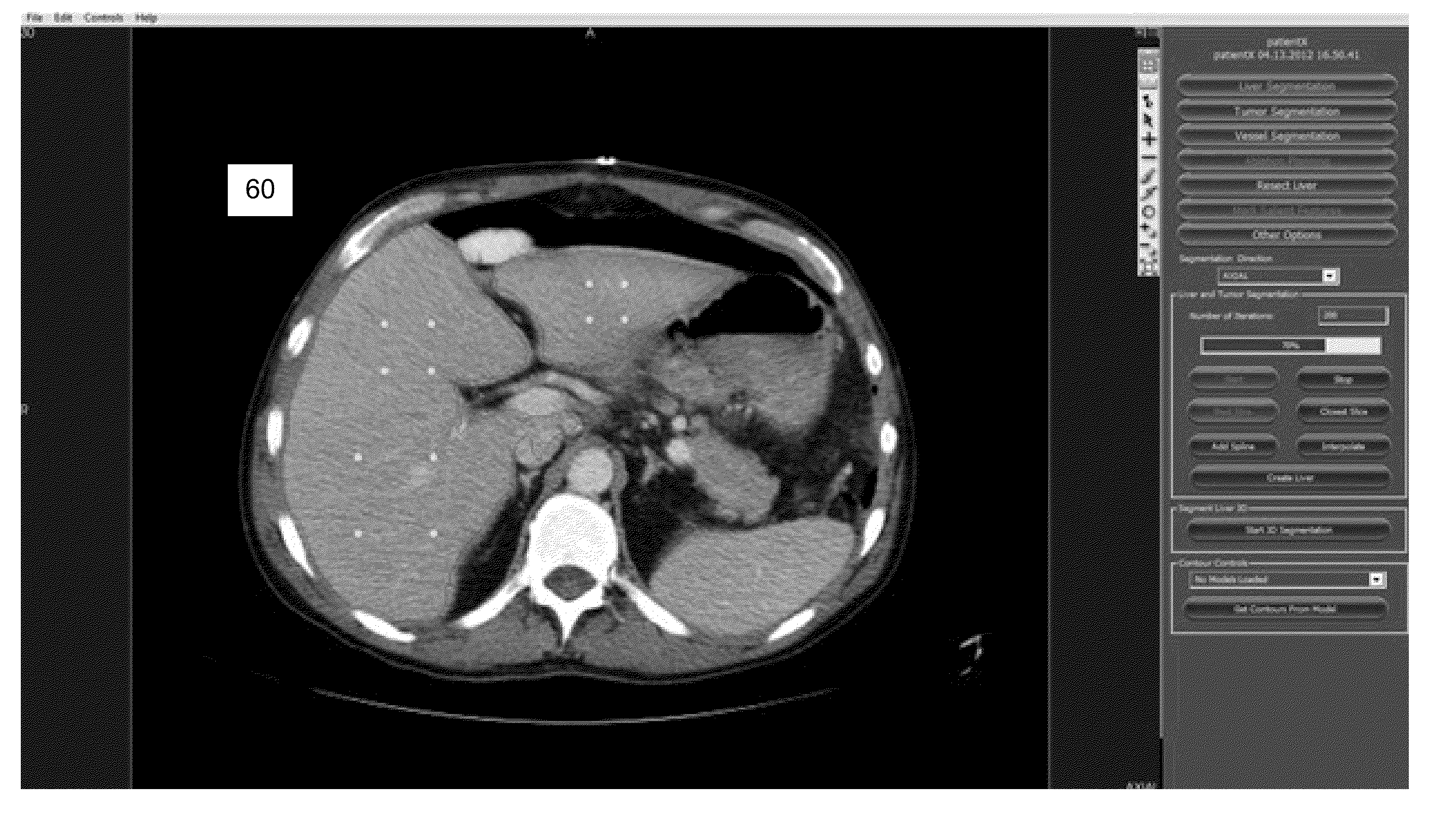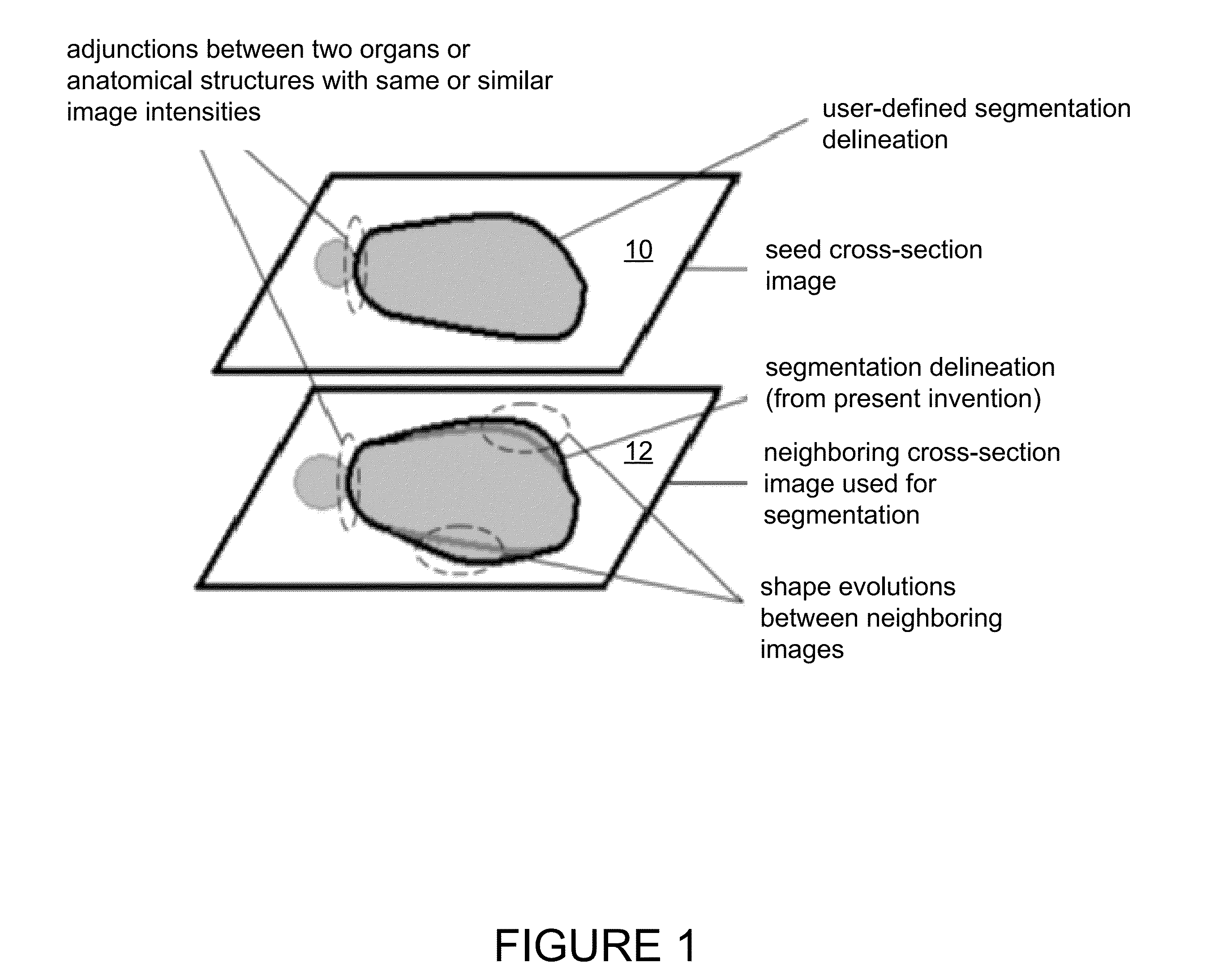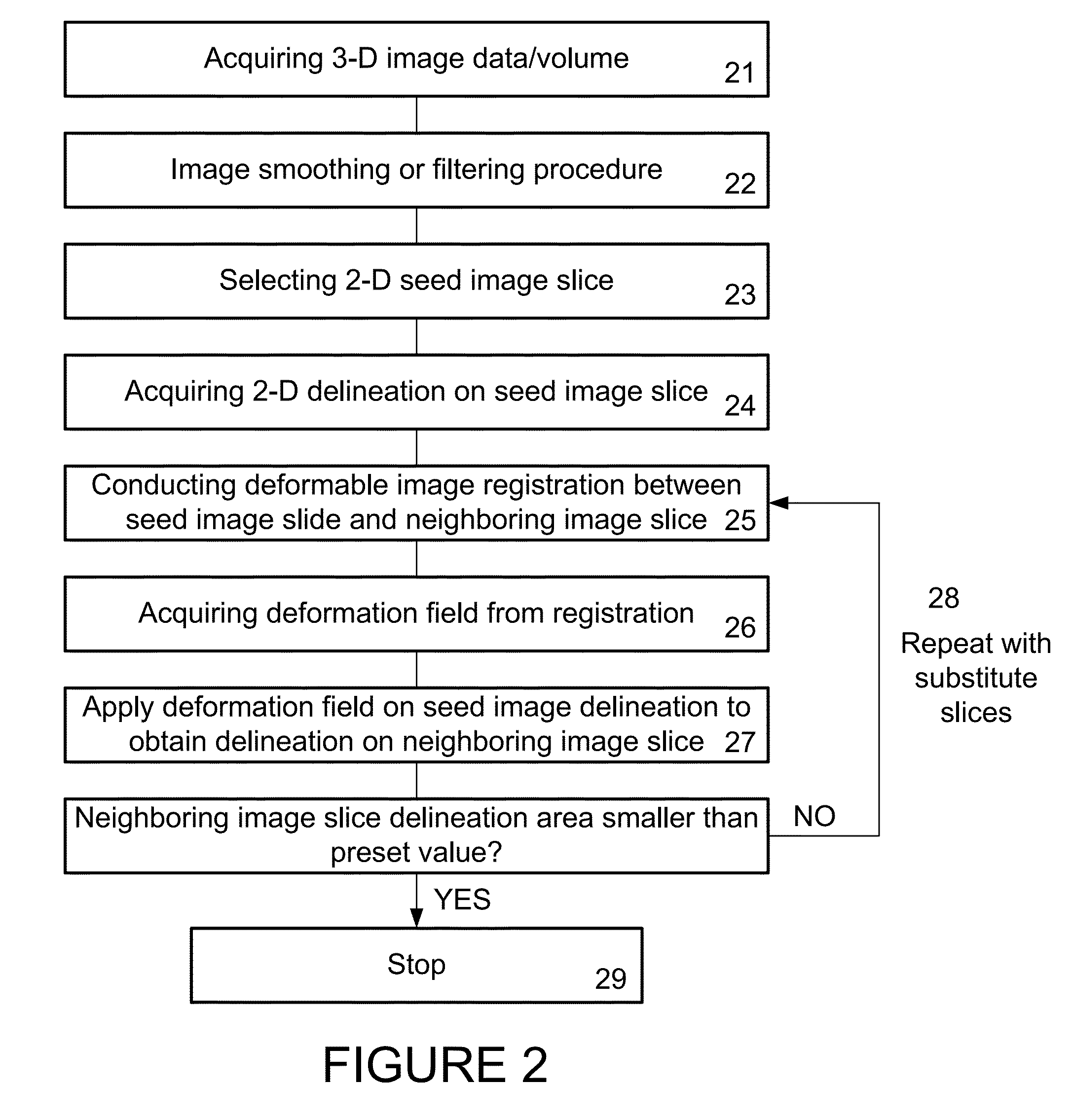Image segmentation of organs and anatomical structures
a technology for applied in the field of image segmentation of organs and anatomical structures, to achieve the effect of facilitating the further image registration procedures and reducing image nois
- Summary
- Abstract
- Description
- Claims
- Application Information
AI Technical Summary
Benefits of technology
Problems solved by technology
Method used
Image
Examples
Embodiment Construction
[0017]Image registration provides a method to define the corresponding points or elements between two images. In various exemplary embodiments, the present invention comprises methods to conduct image segmentation by imaging target morphological shapes evolving from one 2-dimension (2-D) image slice to one or more nearby neighboring 2-D images taken from a 3-dimension (3-D) image. One area defined by a user as a target on an image slice can be found in a corresponding area on a nearby neighboring image slice by using a deformation field generated with deformable image registration procedure between these two image slices. It provides a solution to distinguish target and background areas with the same or similar image intensities, which is one of most difficult issues in the prior art, such as intensity-based region growing methods.
[0018]In one exemplary embodiment, as shown in FIG. 1, the present invention utilizes the similarity of organ morphological structures on nearby neighbori...
PUM
 Login to View More
Login to View More Abstract
Description
Claims
Application Information
 Login to View More
Login to View More - R&D
- Intellectual Property
- Life Sciences
- Materials
- Tech Scout
- Unparalleled Data Quality
- Higher Quality Content
- 60% Fewer Hallucinations
Browse by: Latest US Patents, China's latest patents, Technical Efficacy Thesaurus, Application Domain, Technology Topic, Popular Technical Reports.
© 2025 PatSnap. All rights reserved.Legal|Privacy policy|Modern Slavery Act Transparency Statement|Sitemap|About US| Contact US: help@patsnap.com



